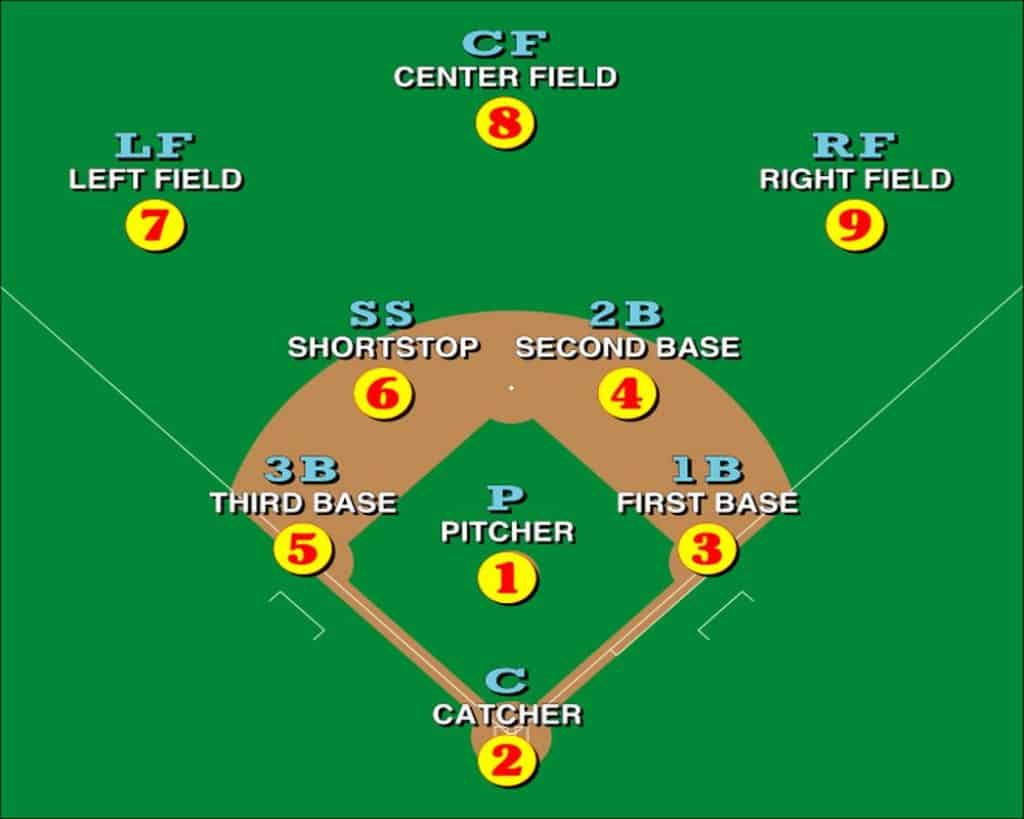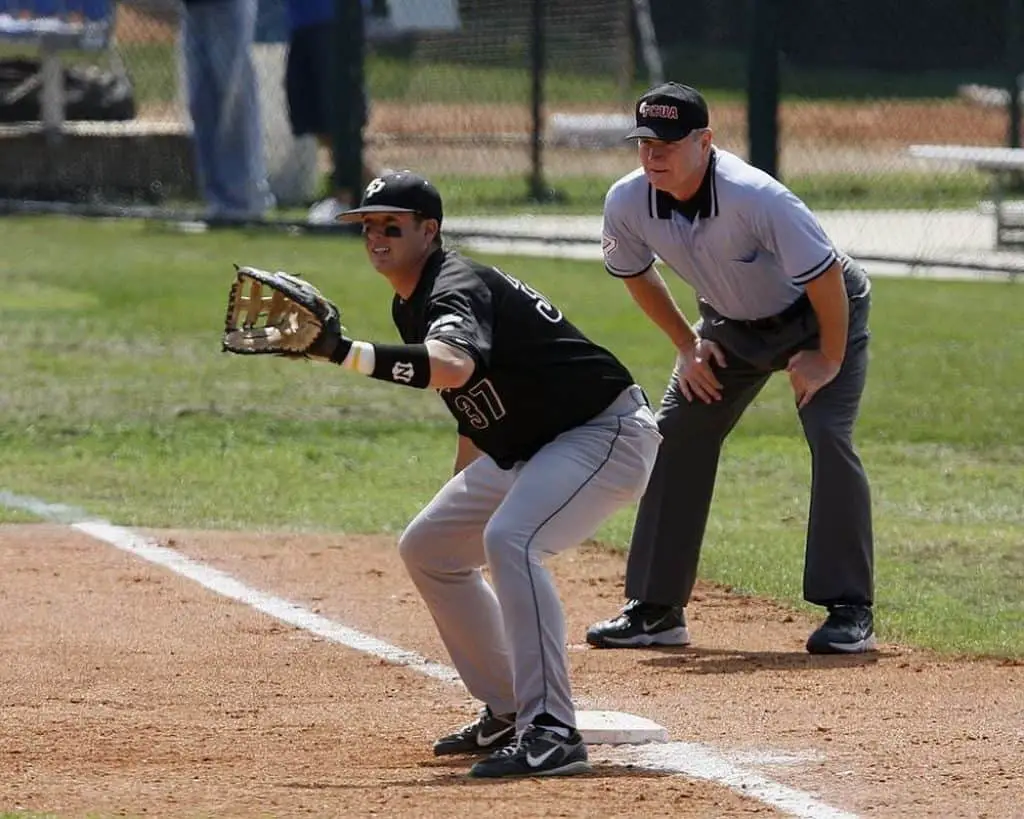What is the Easiest Position in Baseball? (Answered!)
The debate on what is the easiest position in baseball and which one is the hardest is probably as old as the game itself.
Almost every coach, expert, fan, or media member will have a different ranking of baseball positions sorted by how easy it is to play them.
Plus, you’ll hardly find a player willing to admit that it’s his position that requires the least skill or athletic ability.
The truth is, every position has its challenges, and mastering any of them takes a lot of effort and is a worthy accomplishment.
No team can be successful without contributions from every part of the field.
Having said that, it’s still evident that some positions are clearly less demanding than others, as shown by coaches who usually fill those spots with their weakest players.
Below are the baseball positions that are most commonly mentioned in these conversations.
So, let’s dive in!
Table of Contents

Right Field
If you were to survey people with knowledge of the game on what is the easiest position in baseball, the right fielder would likely get the most votes.
This is commonly the spot where coaches hide their weakest players, at least when it comes to defensive abilities.
It’s often the position played by aging players who had lost some of their fielding prowess but are still valuable to the team as dominant hitters.
The main reason for this is that the right fielder is involved in the least amount of action during the game.
The large majority of hitters at any level of the game are right-handed. This means that most of their fly balls will go to the left side of the field.
In addition, at the youth level, this position is even easier as many young batters lack the strength to frequently send the ball flying across the field.
Role of the Right Fielder
The right fielder is the corner outfield position, played behind the first base, on the right side of the outfield.
Their main responsibility is to support the central fielder when the ball is flying in the direction of the central field and the first baseman on balls flying toward the third base.
Like all outfielders, the right fielder commonly has to cover a lot of ground, although players with less mobility can get by in this position, as they are not frequently involved in plays.
So, while they do need some athletic ability, they don’t have to be as fast as a central fielder, for example.
However, they should have a strong throwing arm as they will often be in a position to throw to third base.
Plus, as they play in the outfield, they should have decent fielding skills and a pretty good understanding of the game.
Left Field
The position of the left fielder is not that much different than playing the right fielder, at least in terms of required skills and athletic ability.
However, left fielders see a lot more action of the two.
This is because most fly balls will go to their side of the field because, as I already explained, most hitters are right-handed.
Still, there are two other reasons why some believe this is the easier position than the right field.
The first one is that left field players don’t need a particularly strong arm, as most of their throws will be shorter as they will be going toward the third base which is relatively close,
Also, a left fielder supports and is surrounded by the positions commonly played by the strongest players on the team – shortstop and center fielder.
Left fielders are commonly more appreciated for what they do on offense than their defensive abilities.
Role of the Left Fielder
Commonly, left fielders are positioned in the left outfield corner, right behind the third base.
They’re mainly in charge of patrolling the area close to foul lines, tracking the fly balls going their way, and quickly getting any ground ball that gets to them back to the infield.
Basically, they provide support for the center fielder and the third baseman.
Usually, left field is played by the players with the weakest arm, but playing at this position still requires at least an average range.
Still, the long throws toward the first base are extremely rare.
Plus, they must have decent speed and a great glove to deal with all the line drives and ground balls hit in this part of the field.
Similar to their counterparts on the right side of the outfield, left fielders may lack defensive skill, but are typically among the biggest hitters on the team.
Second Base
Second base is often considered the least demanding of all four infield positions. This doesn’t in any way mean that it’s not important.
Even though it may be fairly easy to play, second base is certainly one of the key positions in the field.
Still, due to their positioning on the field, second basemen usually have to make the shortest throws of all fielding positions.
They’re the closest to the first base and not too far away from other bases, too. With throws so short, most of them will likely be successful.
In addition, the second baseman will often be covered by the shortstop as more athletic players in this position will frequently make plays at the right side of the second base.
Furthermore, as they play in the middle-right side of the infield, second basemen won’t have as many balls coming in their direction as other infielders.
Role of the Second Baseman
The second baseman will commonly be positioned between the first and second base and cover the area to the right of the infield.
Usually, they’ll slightly adjust their position depending on the batter and play closer to the second base with the right-handed batter at bat.
This way, they can always be in the best position to prevent ground balls from reaching the outfield.
The main traits required from a second baseman are speed and agility, they need to be quick on their field to be able to react fast to any pop-ups and ground balls in their area of the field.
Other important responsibilities when playing this position are occasionally making double plays and covering the second when there’s a steal attempt.
This means that second players also have to be rather smart to recognize certain plays and adjust their position and react as quickly as possible.
First Base

There may be different opinions on how difficult it is to play first base.
However, one of the most respected names in the world of baseball, the father of sabermetrics Bill James, considers this position the easiest.
According to James, any other fielder could easily switch and play first base.
This likely isn’t far from the truth as it often happens that players with the worst throwing range on the team and not-so-great athletic abilities end up playing first base.
First basemen almost never have to handle fly balls and their main job is scoping balls thrown by other fielders and fielding the position to hold runners at the first base.
Still, while they don’t often face difficult balls, there’s is a lot of action coming first baseman’s way, so they have to be alert at all times.
Role of the First Baseman
As the name of the position says, first basemen are commonly positioned close to the first base, several steps behind it, a bit in the fair territory.
This positioning allows first basemen to be able to get to the ground balls and field them while still being close enough to the first to cover it on ground balls to the infield.
They get pretty busy during a game as other infielders will often throw the ball to the first to get the force out.
When they catch a ball and force an out, first basemen are credited with a put out and they commonly lead this statistical category.
Most of the first basemen are left-handed to be able to quickly throw to other bases without the need to turn or pivot.
Also, these are commonly tall and large players, which makes them an easier target for other infielders.
Conclusion
If this list has been made by someone else the order of the easiest baseball position would likely be different.
While some positions are certainly easier to play than others, the difference between different spots on the field is rather nuanced.
What may seem easy to someone may be pretty difficult to someone else. No matter which position you may consider the easiest, it doesn’t take much from its importance.
Just because some positions are easier, it doesn’t mean that they should be taken lightly and played with less effort.
Regardless of where you play on the field, you should take pride in your game and always strive to play to the best of your abilities to help your team.
As anyone who’s ever played baseball knows, sooner or later, every player on the field will get a chance for a big play and be the hero of the huge win.




